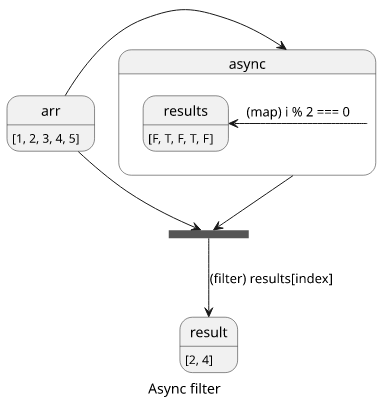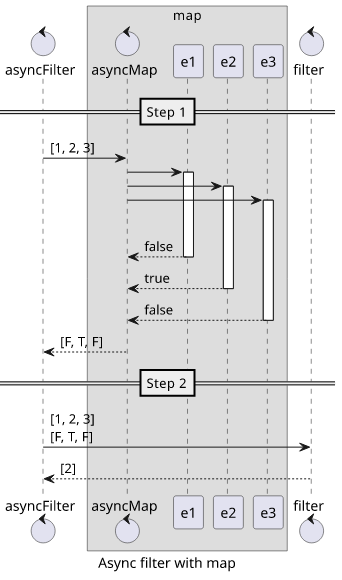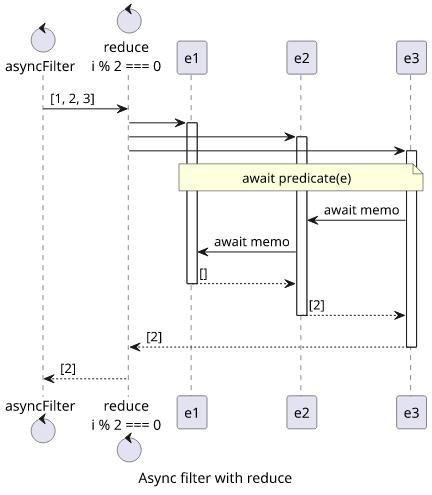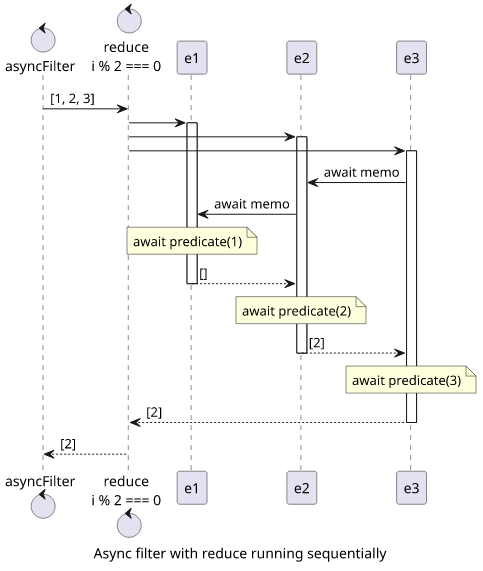How to use async functions with Array.filter in Javascript
How to keep only the elements that satisfy an async condition

In the first article, we've covered how async/await helps with async commands but it offers little
help when it comes to asynchronously processing collections. In this post, we'll look into the filter function, that has probably the most unintuitive
way to support async functions.
The filter function
The filter function keeps only the elements that pass a condition. It gets a function, this time it's called a predicate, and this function returns true/false (truthy and falsy,
to be more precise) values. The resulting collection only contains the elements where the predicate returned true.
const arr = [1, 2, 3, 4, 5];
const syncRes = arr.filter((i) => {
return i % 2 === 0;
});
console.log(syncRes);
// 2,4Async filter with map
The async version is a bit more complicated this time and it works in two phases. The first one maps the array through the predicate function asynchronously, producing
true/false values. Then the second step is a synchronous filter that uses the results from the first step.

const arr = [1, 2, 3, 4, 5];
const asyncFilter = async (arr, predicate) => {
const results = await Promise.all(arr.map(predicate));
return arr.filter((_v, index) => results[index]);
}
const asyncRes = await asyncFilter(arr, async (i) => {
await sleep(10);
return i % 2 === 0;
});
console.log(asyncRes);
// 2,4Or a one-liner implementation:
const asyncFilter = async (arr, predicate) => Promise.all(arr.map(predicate))
.then((results) => arr.filter((_v, index) => results[index]));
Concurrency
The above implementation runs all of the predicate functions concurrently. This is usually fine, but, as with all other functions, it might strain some resources
too hard. Fortunately, since the above implementation relies on map, the same concurrency controls can be used.
Async filter with reduce
Instead of using an async map with a sync filter, an async reduce could also do the job.
Since it's just one function, the structure is even easier
though it does not provide the same level of control.
First, start with an empty array ([]). Then run the next element through the predicate function and if it passes, append it to the array. If not, skip it.

// concurrently
const asyncFilter = async (arr, predicate) =>
arr.reduce(async (memo, e) =>
await predicate(e) ? [...await memo, e] : memo
, []);
Notice that the await predicate(e) comes before the await memo, which means those will be called in parallel.
Sequential processing
To wait for a predicate function to finish before calling the next one, change the order of the awaits:
// sequentially
const asyncFilter = async (arr, predicate) =>
arr.reduce(async (memo, e) =>
[...await memo, ...await predicate(e) ? [e] : []]
, []);This implementation waits for the previous element then conditionally append an element depending on the result of the predicate (...[e] or ...[]).

Conclusion
While an async filter is possible, it works in a way that looks strange at first. And while concurrency controls are still available, they need a bit
more planning than for other async functions.


 An example is available on GistRun
An example is available on GistRun





